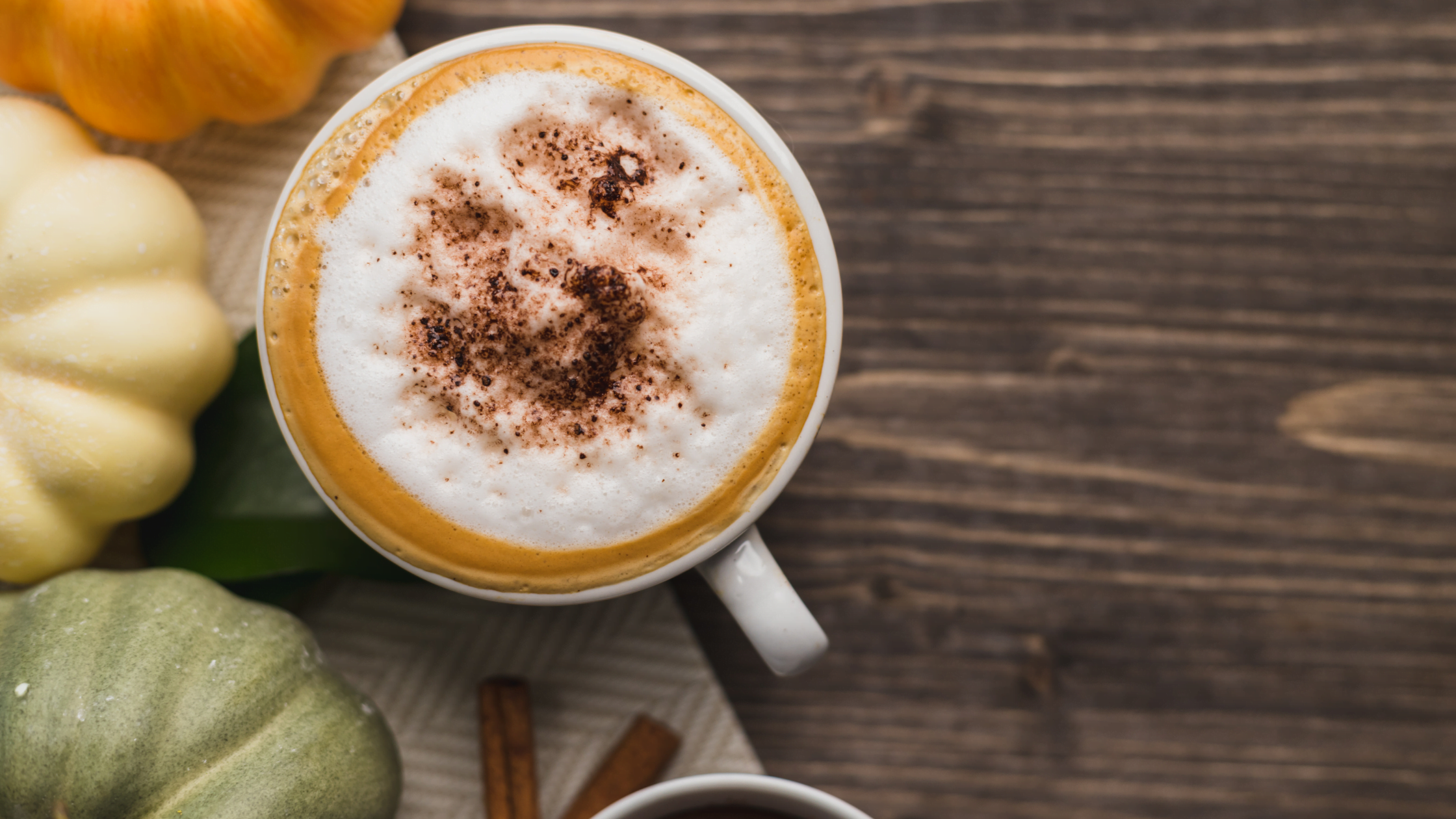Powerful, delicious, and packed with health benefits – no wonder we love pumpkin spice season.
Why is the Pumpkin Spice So Good?
Every fall, pumpkin spice, also known as the pumpkin spice latte (PSL) movement blows into town with an increasingly stronger following. Just one whiff of pumpkin spice sends your taste buds into a frenzy, triggering emotions and changes in your brain. That’s Incredible! Pumpkin spice is powerful.
Here are 3 things you probably didn’t realize about pumpkin spice, that you should know…
-
Your Food’s Smell Affects Your Brain
Often, just one whiff of your favourite pumpkin spice can get your mouth watering. It’s the effect of the tiny food particles you sniff. They hit smell receptors in your nose and relay a message to your brain that something tasty is coming.
Smell has a lot to do with all of your food experiences. Your body has both a physical and emotional response to certain smells. That delicious aroma that makes your stomach growl is the perfect example of how a smell triggers your brain to prepare the digestive tract for upcoming food.
Sometimes, a food’s aroma also causes you to respond emotionally – particularly if that smell is linked to memories. Take, for example, the warm, sweet pumpkin spice aroma. You may remember last fall, wrapping your chilly fingers around the warm porcelain mug filled with a pumpkin spice latte, nestled in a warm café with a good friend.
-
Pumpkin Spice Contains No Pumpkin
Perhaps add this to the list of things one never really stopped to think about, but despite its name, there’s actually no pumpkin in pumpkin spice. It’s a blend of traditional spices. Actually, five spices create the famous pumpkin spice: cinnamon, ginger, nutmeg, allspice, and ground cloves. And, many of these spices are traditionally used as medicines.
-
How to Make Pumpkin Spice
The most common pumpkin spice blends let cinnamon shine, with a backdrop of other spices. However, when you make your own pumpkin spice you can customize it any way you like. Trust me – once you’ve made your own pumpkin spice, you’ll crave it even more.
- 3 ½ tsp Cinnamon (ground, powder)
- 2 tsp Ginger (ground, powder)
- 1 tsp Nutmeg
- ½ tsp All Spice
- ½ tsp Cloves (optional)
You may find it best to make your pumpkin spice in small batches and store it in a small glass jar. That can prevent it from going stale and losing its flavour, before you use it all up.
3. Pumpkin Spice Is Healthy for You
Take a sip on this delicious news: Beyond the alluring aroma of pumpkin spice are a whole bunch of health benefits. Science shows pumpkin spice is healthy for you. Here’s what you want to know…
Cinnamon
This sweet spice made from cinnamon bark has been popular for thousands of years. Many studies show it’s therapeutic in many ways, including being an antioxidant that helps your body’s efforts to keep your blood pressure, blood sugar, and inflammation in check. Plus, in ways it protects the digestive tract.
It’s the antibacterial abilities of cinnamon that have scientists really excited – they’re looking into whether it could be effective against infectious diseases, including urinary tract infections.
Ginger
Your beloved pumpkin spice contains ginger. A star among spices, ginger is best well-known for its tummy-soothing magic. How does ginger work? It helps with bloating, flatulence, nausea, vomiting, motion sickness, and other tummy complaints by blocking the hormone called serotonin from making the smooth muscles inside the stomach and gut contract.
Ginger is more than a tummy soother. It’s an impressive antioxidant and anti-inflammatory. Plus, science suggests ginger may stop fat accumulation – which may help with weight loss.
Nutmeg
Surprisingly, the nutmeg in your pumpkin spice may deserve a bit of respect. It’s rich in calcium, potassium, magnesium, and iron.
Scientists are excited about its antibacterial values and are wondering if it might have a larger health role to play in our health care.
Allspice
A dried unripe berry, allspice is not a blend of spices, despite what I thought. Silly me. But, its aromatic powers definitely make allspice a star contributor to pumpkin spice.
Did you know allspice is a pretty good antioxidant? Plus, it’s a source of zinc and copper – two minerals linked with immune health. Allspice sounds like another healthy reason to join in on pumpkin spice season.
Ready to sprinkle your fall with pumpkin spice?
It’s great on your latte, granola, or even, in your next smoothie.
Curious about healthy food?
Discover more about Holistic Nutrition with flexible learning formats available from the Canadian School of Natural Nutrition.
Other workshops & certificates available in addition to the full diploma program.
LEARN MORE
References:
- Cinnamon: a systematic review of adverse effects. Clin Nutr 2019 Apr;38(2):594-602.
- Pharmacological properties and their medicinal uses of cinnamon: a review. J Pharma Pharmacol 2019 Dec; 71(12):1735-1761.
- Antimicrobial activity of spices popularly used in Mexico against urinary tract infections. Antibiotics (Basel) 2023 Feb 3;12(2):325.
- Ginger on human health: a comprehensive systematic review of 109 randomized controlled trials. Nutrients 2020 Jan; 12(1): 157.
- Anti-oxidative and anti-inflammatory effects of ginger in health and physical activity: review of current evidence. Int J Prev Med 2013 Apr; 4(Suppl 1): S36-S42.
- Ginger prevents obesity through regulation of energy metabolism and activation of browning in high fat diet-induced obese mice. J Nutr Biochem 2019 Aug;70:105-115.
- Assessment of nutritional and medicinal properties of nutmeg. Scientific African 2023 March; 19:e01548.
